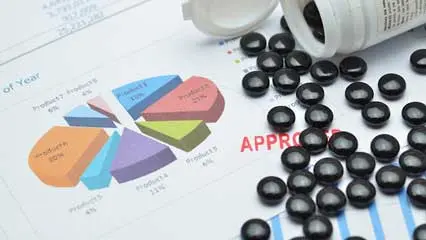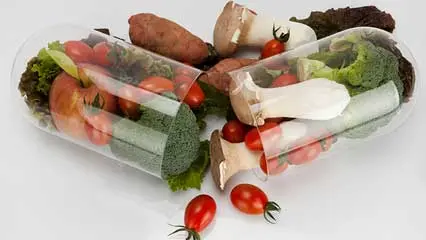
Organic Sanitary Napkins Market Share, Trends, Growth Drivers, Size, Revenue, Challenges and and Future Opportunities Till 2033: SPER Market Research
Category :
Consumer & Retail
Published: Jul-2023
Author: SPER Analysis Team
Organic Sanitary Napkins Market Share, Trends, Growth Drivers, Size, Revenue, Challenges and and Future Opportunities Till 2033: SPER Market Research
Global Organic Sanitary Pad Market is projected to be worth USD XX billion by 2033 and is anticipated to surge at a CAGR of 8.1%.
Menstrual products made from organic materials such as organic cotton or plant-based fibres are known as organic sanitary pads. What distinguishes them from standard pads is the absence of synthetic chemicals, scents, and colours that are usually present in traditional choices. The label "organic" denotes that the materials used in these pads were grown without the use of pesticides, herbicides, or genetically modified organisms. These pads value environmental sustainability and may be disposable or compostable. They provide an alternative to standard pads, reducing the hazards connected with hazardous chemicals and encouraging a better option for individuals and the environment.
Global Organic Sanitary Pad Market Driving Factors and Challenges
Environmental sustainability is a fundamental driver of the organic sanitary pad market's growth. Consumers are actively seeking eco-friendly menstruation products as their worries about environmental pollution and waste management rise. Organic sanitary pads, which are generally biodegradable or compostable, are in line with sustainable practises and have a lower environmental effect than standard pads. This consumer desire for greener options drives market growth as people prioritise items that help them live a more ecologically conscious lifestyle.
The organic sanitary pad business is heavily influenced by government efforts and legislation. Supportive policies, incentives, and public awareness campaigns encouraging organic and ecologically friendly alternatives can have a significant influence on market growth.
Request For Free Sample Report @ https://www.sperresearch.com/report-store/organic-sanitary-pad-market.aspx?sample=1
However, the Organic sanitary pad market also faces challenges. In some areas, the availability and distribution of organic sanitary pads may be limited compared to conventional pads. This restricted availability is due to distribution network and retail channel restrictions, making it difficult for customers to obtain organic products conveniently. To grow the market, it is critical to increase the availability and accessibility of organic sanitary pads in various markets.
Scepticism and a lack of trust might also stymie the organic sanitary pad market's growth. When compared to traditional pads, some consumers may dispute the usefulness and performance of organic pads in terms of absorbency, leakage prevention, and comfort. To address these issues, open information, quality certifications, and favourable user experiences are required.
Impact of COVID-19 on Global Organic Sanitary Pad Market
Because of the epidemic, consumer shopping habits have changed. Economic uncertainty and financial restraints have caused some customers to become more price-conscious, preferring low-cost choices over expensive organic items. This shift in consumer behaviour may have had a short-term influence on demand for higher-priced organic sanitary pads.
Simultaneously, due to lockdowns and limitations on traditional retail outlets, the expansion of e-commerce has been accelerated throughout the epidemic. Consumers now rely on online shopping platforms to obtain necessities such as sanitary pads. This change to e-commerce has given chances for organic sanitary pad makers to increase their consumer base and improve their online presence, allowing for market development.
Organic Sanitary Pad Market Key Players:
The market study provides market data by competitive landscape, revenue analysis, market segments and detailed analysis of key market players such as; Azah Sanitary Pads, Corman SpA, COTTON HIGH TECH SL, Hannah Health One Inc., Hengan International Group Co. Ltd., Clark Corp., Lady Anion, Naturalena Brands, Ontex BV, Rael Inc., Others.
For More Information about this Report @ https://www.sperresearch.com/report-store/organic-sanitary-pad-market.aspx
Global Organic Sanitary Pad Market Segmentation:
By Product Type: Based on the Product Type, Global Organic Sanitary Pad Market is segmented as; Menstrual Pad, Pantyliner, Others.
By Design Type: Based on the Design Type, Global Organic Sanitary Pad Market is segmented as; Non-Winged, Winged.
By Disposability: Based on the Disposability, Global Organic Sanitary Pad Market is segmented as; Disposable, Reusable.
By Age Group: Based on the Age Group, Global Organic Sanitary Pad Market is segmented as; 12 Years to 19 Years, 20 Years to 25 Years, 26 Years to 40 Years, 41 Years to 50 Years.
By Price: Based on the Price, Global Organic Sanitary Pad is segmented as; High, Low, Medium.
By Distribution Channel: Based on the Distribution Channel, Global Organic Sanitary Pad Market is segmented as; Online (Company Owned Website, E-Commerce Website), Offline (Convenience Stores, Drug Stores, Hypermarkets/Supermarkets, Other Retail Based Stores).
By Region: This report also provides the data for key regional segments of Asia-Pacific, Europe, Middle East and Africa, North America, Latin America.
This study also encompasses various drivers and restraining factors of this market for the forecast period. Various growth opportunities are also discussed in the report.
Would you like to view the sample pages?
Get Sample PagesExplore Related Reports
Domains Served
Our Global Clients
Our data-driven insights have influenced the strategy of 200+ reputed companies across the globe.




































